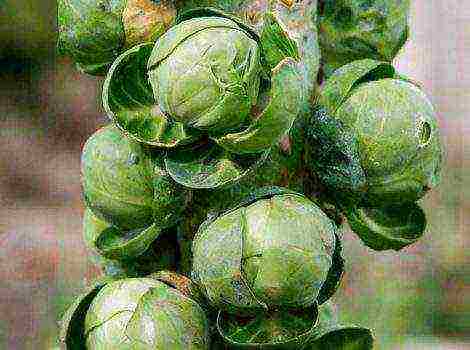Content
There are two ways of raising cockerels from seed:
- disembarkation in September;
- disembarkation in March.
Freshly harvested seeds are planted in September. This is the easiest way. However, if frosts come late, the sprouts may have time to rise. In this case, they will die.
Better to spend more time but plant the seeds in March. To do this, at the beginning of February, the seeds must be wrapped in a damp cloth, placed in a container with a lid and placed under the freezer. They should be kept at a temperature of 3-5 ° C. The seeds should be stored in this way for 1 month. In March, they need to be planted in a container filled with soil and placed in a warm place. As soon as the sprouts appear, they need to provide additional lighting. It is necessary to transplant sprouts into the ground in May.
Males can be grown at home, however, for this you need to choose only dwarf varieties, since the usual ones will be too tall and voluminous for pots. In order for irises to grow at home, certain conditions must be created for them.
- The soil. Irises work well with fibrous potting soil for bulbous plants, but if you don't have it on hand, you can use regular clay potting potting soil.
- Lighting. Lighting should be moderate during growth and full during flowering. Avoid leaving blooming irises in direct sunlight.
- Temperature. Irises don't like heat. During the flowering period, it is desirable that the temperature is not higher than 16 ° C.
- Watering. Saturate the soil well with water before planting. In the future, water the plant once a week. During the flowering period, the frequency of watering should be increased up to 2-3 times a week.
- Top dressing. Introduce liquid plant food 10 days after planting. Then start feeding when the buds form and finish after the yellow leaves have died.
- Air humidity. Irises love dry air. Spraying is not required for these flowers.
By the way, you can transplant such flowers into open ground at any time. They will continue to grow and bloom.
Try planting different varieties of irises in your home and garden. Outwardly, they are very different in color, shape of petals and even smell. These plants will become a bright decoration of the flower bed.
A perennial plant with a beautiful name iris is in demand among flower growers; it is grown on personal plots, dachas, window sills. Translated from Greek "iris" means rainbow, as the plant has an incredible variety of colors. Another name is also used - "kasatik".
What is the popularity of the plant based on
Iris has many advantages, these include: beauty and grace of the flower, delicate aroma, high decorativeness of the stem, foliage, variety of shapes, shades, unpretentiousness, good winter hardiness.
However, the last two properties are more likely to belong to Siberian irises, accustomed to severe weather conditions.
Types of irises, some of the nuances of their cultivation
A common cultivated species of irises are bearded irises, so named for the soft bristly growths on the lower petals. They are also called "northern orchids".
Siberian irises are graceful, resistant to adverse weather conditions, unpretentious, immune to bacteriosis, and are able to heal soil infected with bacteriosis.
Japanese (xiphoid iris) are distinguished by an unusual flower shape. Plants are picky, require dry wintering (covered with oak leaves, plastic wrap), slightly acidic soil with uniform, medium moisture during the flowering period.
Swamp irises are the most persistent, they grow well near water, in water, on swampy soils, in dry places. The life span of the marsh whale is about 8 years.Moreover, it does not require any maintenance at all.

How to grow irises from seeds
The flowering period of irises in our country lasts from April to mid-July. This does not mean that one variety will delight you for two and a half months, each of them is given no more than 15 days to bloom. Cunning gardeners place several varieties with different flowering periods on the same lawn, admiring the beautiful flowers until mid-summer.
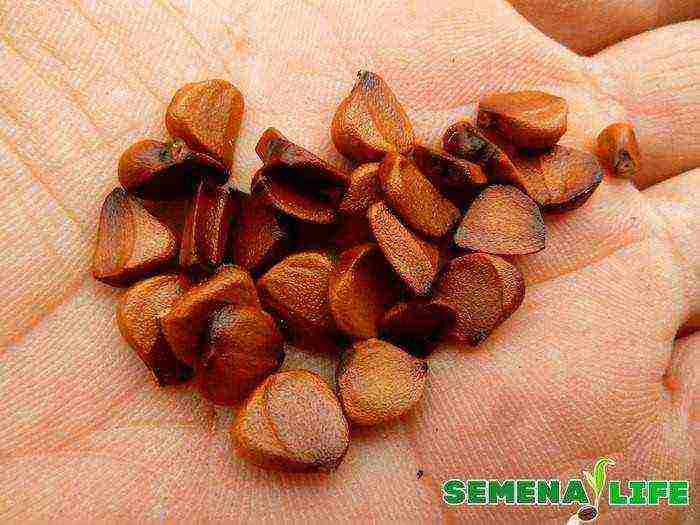
There are never many irises on the site - the unearthly beauty of this flower can be admired endlessly. It is for this reason that many gardeners choose to grow iris from seeds.
With specific irises, everything is simple - after the end of the flowering period, right on the stem, carefully pack the box with immature seeds in gauze or synthetic tulle. The seeds ripen until autumn, you can not keep track of the cracking of the capsule.
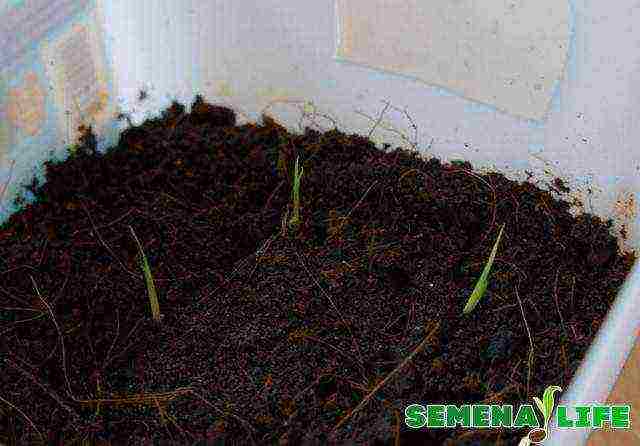
Method number 1
In mid-September, seeds are planted in a garden bed (planting depth - 2 cm, distance between rows and in a row - 10 cm). So that tender sprouts do not die from frost in autumn and spring, they are covered with padding polyester, which will serve as an air cushion.
Method number 2
The seeds are stratified - wrapped in a damp cloth, placed in a closed container, kept on the top shelf of the refrigerator for 1 month. February - sowing time, prepare a peat pot for each seed, deepen it by 2 cm. Seedlings need light and warmth.
Seedlings are planted in May.
Both methods are good for breeding specific irises, varietal ones can upset a novice breeder with the appearance of a completely different color, flower shape.
Other entries about irises
Dear gardeners, there is a strange trend with irises. On the street, all neighbors have purple flowers this year, although in the past there were completely different types and colors. And in my yard everything turned yellow. I do not argue, it is beautiful of course, but it's a pity, I have ...
A question from our subscriber Marina: My iris buds began to rot, possibly waterlogging. I'll try to loosen it up: the soil is heavy, clayey, I planted it without knowing anything about irises. If there is any other reason other than waterlogging? Will…
It has already become a tradition at the next exhibition of flower cultures of the Nikitsky Botanical Garden (Yalta, Crimea) - to find registered plants. The exhibition of irises this year was no exception, and I am among all this luxurious rainbow splendor ...
A question about our subscriber: There is a question about irises - on the buds of the iris (more precisely, in the buds) white worms look like maggots start up, they eat out the bud that has not yet opened from the inside and the flower dies. The question is how and how to deal with this?
I have Siberian irises almost or not at all. Why?
Today I made a fascinating journey - I visited an iris breeder. Impressions - a lot! Unfortunately, he did not give permission to photograph flowers up close, only allowed general photographs to be taken from a distance. Commercial interests, it is necessary ...
See all materials
about irises :
See all
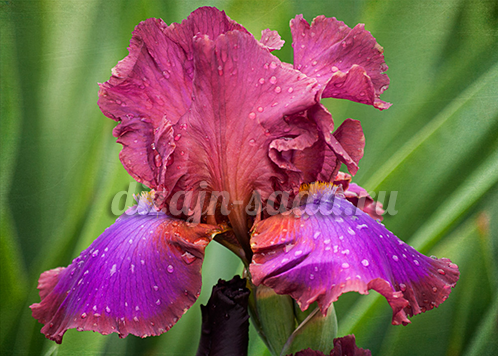
Iris has long attracted the attention of flower growers with the exquisite beauty of its flowers. It got its name from the ancient Greek goddess of the rainbow Iris, the mediator between gods and people. Her clothes were woven from silver dew drops, playing with all the colors of the rainbow. Likewise, irises play with all shades of color, for irises are fragments of a divine rainbow that has fallen to the ground.
The largest collection of irises includes blue. However, it must be borne in mind that irises of the same variety can change their shade depending on the chemical composition of the soil and illumination.
Red irises are invariably of great interest. Currently, no poppy-red irises have been bred. There are varieties in which the beards on the phallus are painted in true red, but no more.

The best time to plant bearded irises is the phase of active root growth, which occurs after the flowering phase, 1.5-2 weeks after flowering. During this period, growers begin to divide the iris bushes. In the middle zone, this time can be extended until the end of August.
The planting unit of bearded irises is a delenka, which has a formed rhizome and at least one fan of leaves (which must be cut off at a height of 15-18 cm) and a bunch of roots.
Bearded irises are lovers of warmth and light, open sunny areas are suitable for them. Of course, they will grow in the shade, but in this case they will not please you with their abundant flowering. Bearded irises also do not like places not protected from strong winds.
Irises do not tolerate heavy clay and acidic soils. For comfortable development and flowering, bearded irises need drainage, deoxidized soil with the introduction of sand into it.
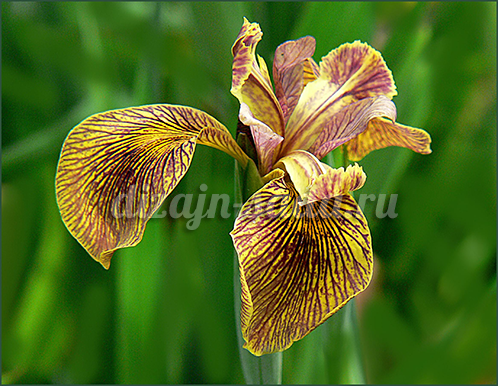
A mandatory rule is not to deepen the rhizome. It must breathe. With a buried rhizome, the plant at best will not bloom, at worst it will rot and die.
Bearded irises love space and dislike neighbors. Give them plenty of room to keep the plants free. Observe the distance between irises about 50 cm. When planting a new variety, while the plant is small, the space can be temporarily filled with annuals, those who will not compete with the owners and show an aggressive character.
When planting bearded irises, one must not forget that every year they will grow due to the growth of new annual links of the rhizome. The roots will grow due to the awakening of new axillary buds. In order for the bearded irises to grow towards each other, they should be planted in a checkerboard pattern, with a distance of 50 cm.
From my point of view, solitary plantings look most impressive in small groups in a circle. Irises without competitors have the ability to grow, with such a planting scheme, they are easy to care for. In addition, the blooming bush of bearded irises during flowering is a fascinating and fantastic sight. With a circular planting, it is convenient to maintain the shape of the bush and separate the planting material, both from the middle of the circle and from the outside.
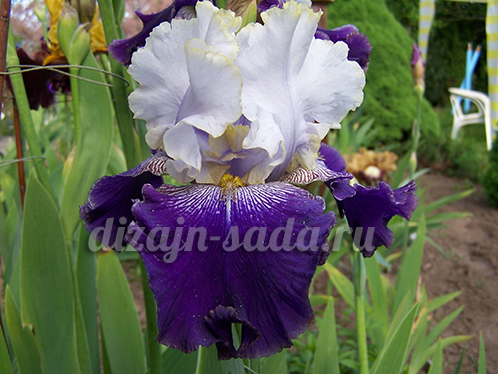
If you want to settle bearded irises in your flower garden, do not chase after colorful advertising pictures, such irises cost fantastic money (so in the spring new collectible irises were offered at a price of 950 rubles per planting unit).
I can assure you that there are many excellent long-established varieties, exclusively decorative, pleasing to the eye with an abundant annual flowering. Some of the old varieties bred in Europe have already fully adapted to our conditions, in contrast to modern American novelties.
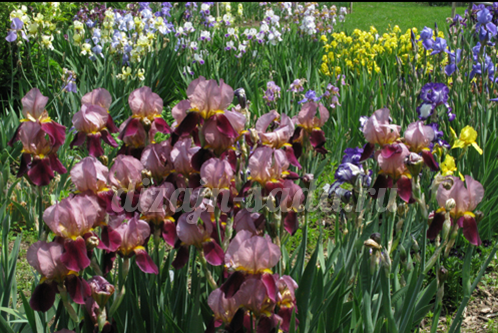
Reproduction of irises by seeds
With seed reproduction of species irises, everything is not predictable, and does not cause interest. First of all, we will focus on the reproduction of bearded irises. When breeding varietal irises, you need to be prepared for surprises regarding the color and shape of the flower.
If there are several varieties of irises on the garden plot, free re-pollination may occur. You can go the other way: to carry out the pollination of two specific varieties. For this, the pollen of one iris variety is transferred to another. After artificial pollination, so that pollen from other varieties does not get on the plant, it should be isolated. Faded inflorescences form testes. After 2-2.5 months, the seeds ripen completely. In this case, the capsules crack and the seeds fly apart. To prevent this, each such seed should be carefully covered with a lutrasil cover with a tag indicating the "father" (from whom the pollen was taken) and "mother" (who was pollinated).
The seeds of the iris are large, light brown, varied in shape; the seed capsule contains a different number of them. Germination is also not the same for different varieties, no more than 50% when sowing before winter, and when sowing in spring, germination can be only 15%. For fear that during autumn planting, iris seeds may have time to germinate, they should be kept in the refrigerator for 1.5 months, and from November they should be planted in pots and taken out into the open air until spring. Germination should begin in March. With such freezing, the seedlings deviate from the maternal form in many respects.
In conclusion, I would like to add that crossing different varieties of irises is a very exciting experience.Not always and not everywhere there is an opportunity to purchase the planting material you like, so seed reproduction can be a way out of this situation.
Division and transplantation of irises, video

